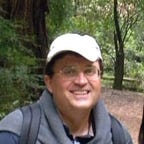Misinterpretation of James Webb Images, Again
A recent image of smoking rings around a particular double star system has raised a wave of publications in scientific journals and media:
Here is the explanation from the NASA and “Nature/Astronomy”:
Each ring was created when the two stars came close together and their stellar winds (streams of gas they blow into space) met, compressing the gas and forming dust. The stars’ orbits bring them together about once every eight years; like the growth of rings of a tree’s trunk, the dust loops mark the passage of time.
Roughly once every eight years — something blows this dust away from the star: forming the sequence of rings seen by the Webb.
Shouldn’t it raise eyebrows? — Ripping off star shells in non-cataclysmic manner on a regular basis, in uniformly thick circles without any plumes from the difference in the ripper approaching, closing up, and leaving. Neither is there a distortion trail or a dent in these “dust circles” from the presence of the partner star (it is an obstacle anyway). I would have considered a static holographic effect first, before even looking into periodic nearly symmetric star shaving or moderate bursts.
Many of us were fascinated by the double slit experiment, which revealed the wave nature of light:
This experiment has a less famous sibling, which you can conduct with your children, about laser beam diffraction around a hair thread or a wire:
The result is the same: we observe ups and downs in brightness horizontally, which is the wave interference pattern.
A similar, but as concentric circles, pattern we would have observed, if the obstacle for the laser beam was a dot or a spot. It will look like the JWST image we are discussing. From our perspective, one bright star behind another less luminous star or just behind a planet would cause the same optical effect.
“Again” in the title refers to many other misinterpretations in astronomy:
- Hubble Redshift observation was wrongly explained by the Big Bang and the Universe expansion, see details in ERIC LERNER: NO BIG BANG IN JWST IMAGES.
- JWST images of “infant” galaxies, see details in Distant galaxies are neither small nor infant.
- “Black Holes’ images” misinterpretation, check Neither Event Horizon nor Black Holes Exist.
There is a pattern in all these misinterpretations: “because of some explosion or implosion”. But it’s optical illusion only:
- Smoke rings = interference pattern in light waves
- Hubble Redshift = time dilation effect on light frequency
- Infant galaxies = concave lensing effect caused by time speeding up
- Nearly Black Holes = time dilation prevents star ignition and causes refraction by Snell’s law around it
If interested, check details in Time Matters, which is more than about optical illusions’ explanation.
Food for thought: What plays the screen role for the image at the top:
— a dust cloud
— the telescope mirror
— or time dilation screen (explained in BOB LAZAR: FROZEN CANDLE)?
And why is the corona not of perfectly rounded spheres?
Check some answers here.
In comparison, in the image below, thin mist (of water droplets or ice crystals in the air) is the screen:
This image could be explained by so-called Newton’s Rings effect, check my staggering in many ways story: Newton’s Rings Teach Us a Lot, Especially Now.
